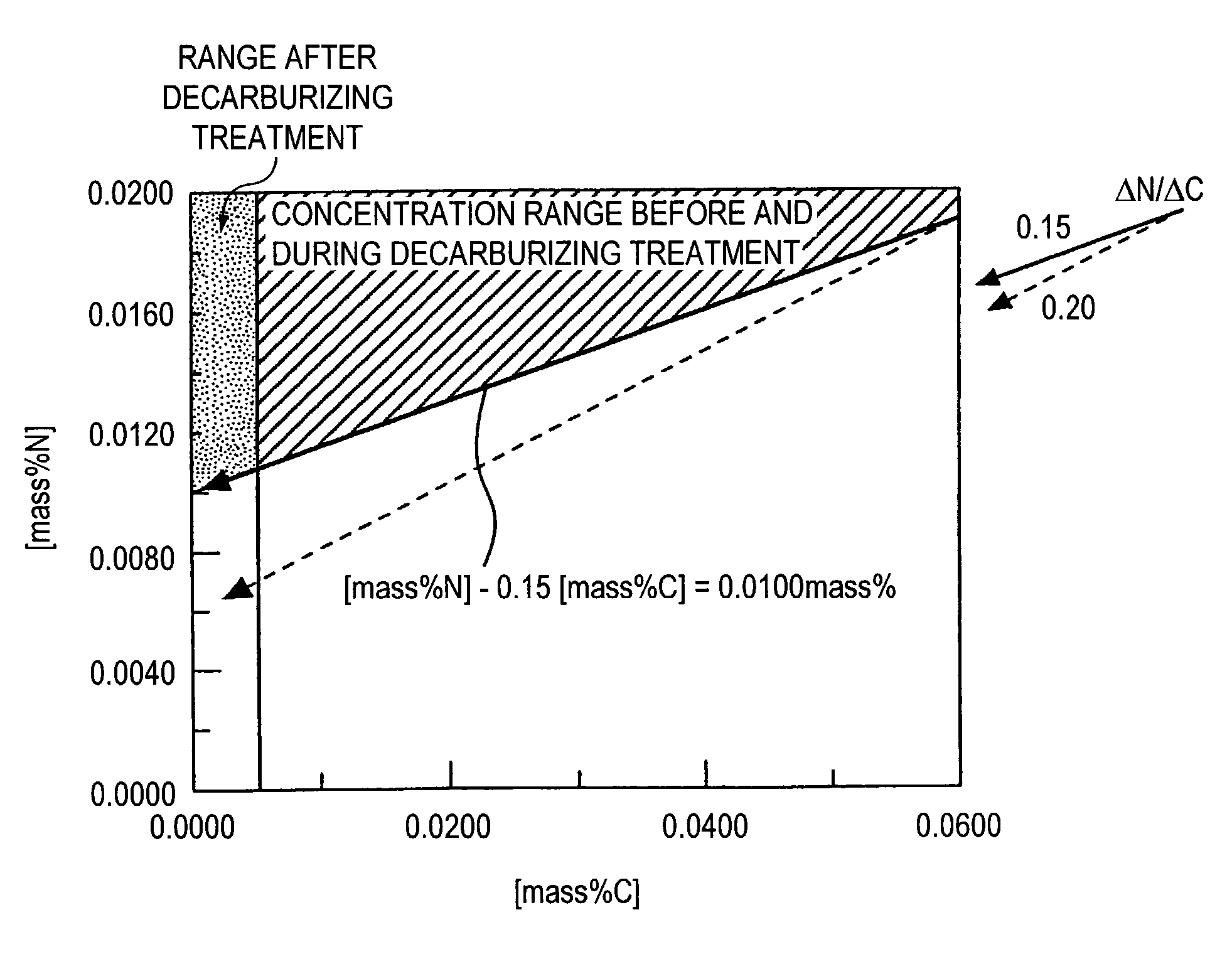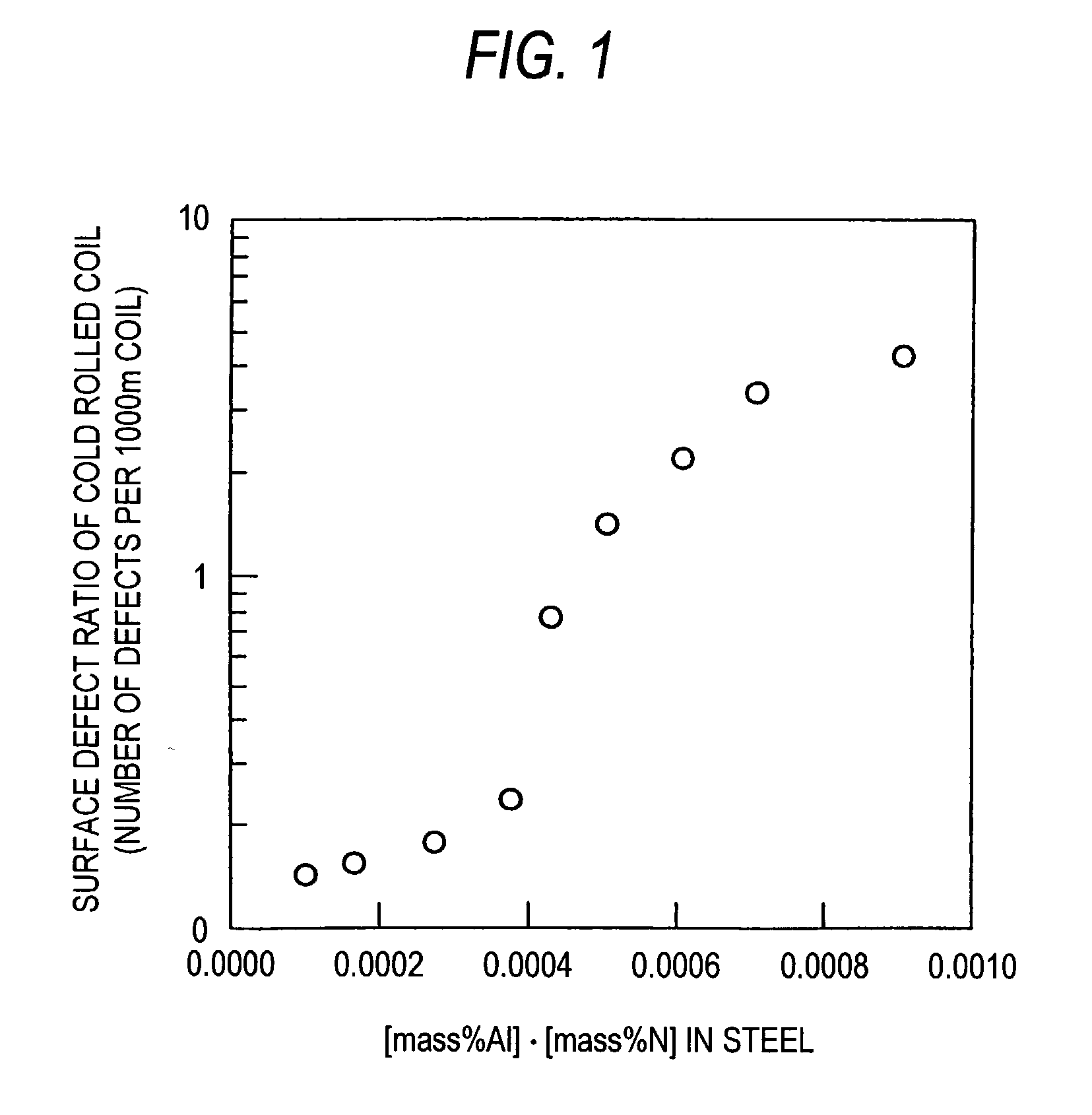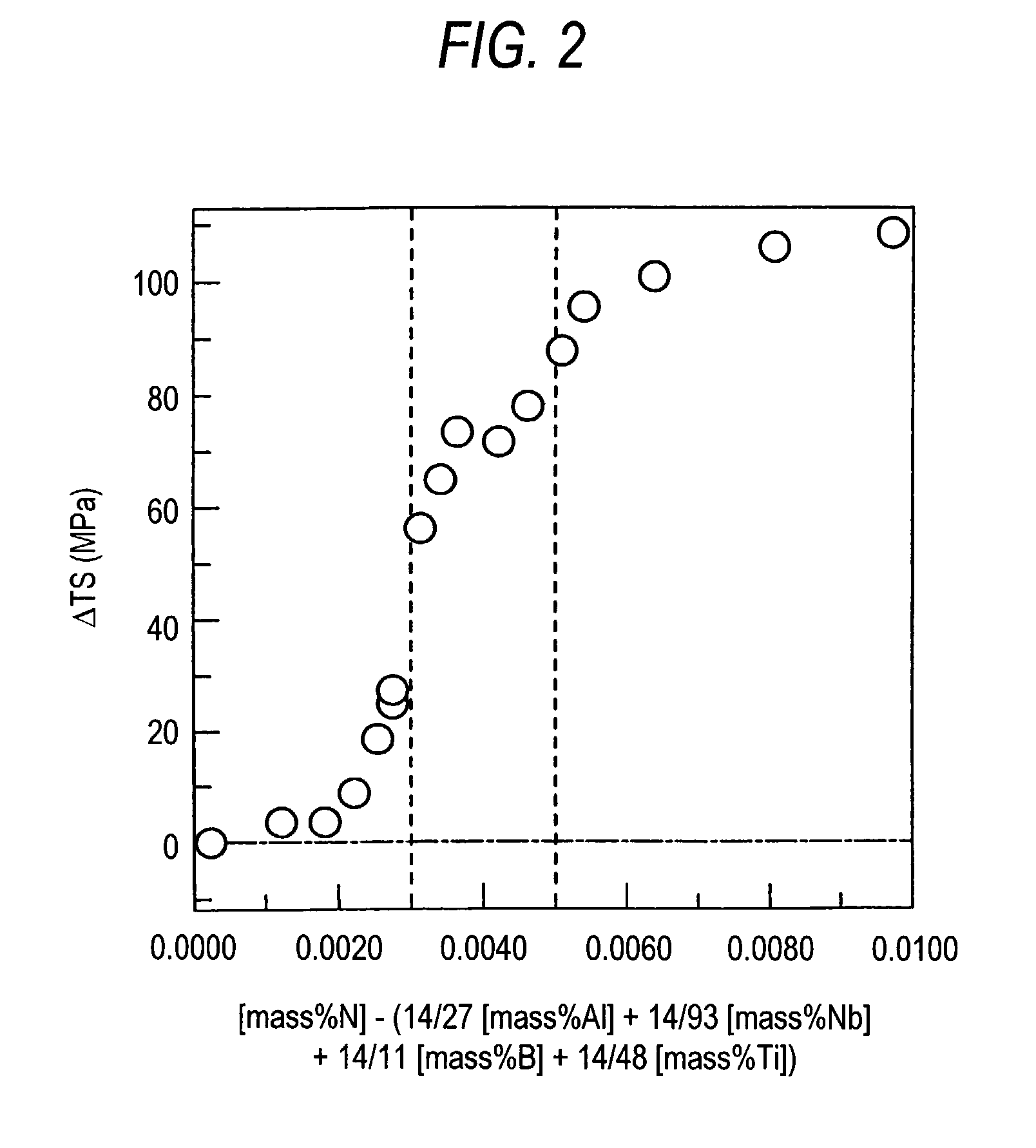Process for producing high-nitrogen ultralow -carbon steel
a technology of high-nitrogen ultralow-carbon steel and process, which is applied in the field of process for producing high-nitrogen ultralow-carbon steel, can solve the problems of low nitrogen solubility, slow nitrogen increase rate, and extreme difficulty in obtaining ultra-low-carbon steel, and achieve low carbon content, high productivity, and low cost
- Summary
- Abstract
- Description
- Claims
- Application Information
AI Technical Summary
Benefits of technology
Problems solved by technology
Method used
Image
Examples
##ventive example 1
Inventive Example 1
[0083] A primary decarburizing treatment was applied to 250 t of molten iron in a converter furnace to lower the C concentration as far as 0.0300 mass %. In this state, the N concentration was 0.0040 mass % and the Mn concentration was 0.07 mass % in the molten steel. Subsequently, N--Mn alloy (C: 1.5 mass %, Mn: 73 mass %, N: 5 mass %) was added by 5 kg / t into a ladle upon tapping from a converter furnace to increase the N concentration in the molten steel in the ladle to 0.0140 mass %. In this state, the C concentration was increased to 0.0400 mass % and the Mn concentration was increased to 0.40 mass %.
[0084] For decarburization of the molten steel into the ultra low carbon steel, secondary carburization refining was applied by a vacuum decarburizing treatment in an RH type vacuum degassing facility. [mass %N]-0.15 [mass %C] before the secondary decarburization refining was 0.0080 mass % to ensure 0.0060 mass % or more of concentration. During the vacuum decarb...
##ventive example 2
Inventive Example 2
[0090] A primary decarburizing treatment was applied to 250 t of molten iron in a converter furnace to lower the C concentration as far as 0.0300 mass %. In this state, the N concentration was 0.0040 mass % and the Mn concentration was 0.07 mass % in the molten steel. Subsequently, N--Mn alloy (C: 1.5 mass %, Mn: 73 mass %, N: 5 mass %) was added by 5 kg / t into a ladle upon tapping from a converter furnace to increase the N concentration in the molten steel in the ladle to 0.0165 mass %. In this state, the C concentration was increased to 0.0300 mass % and the Mn concentration was increased to 0.40 mass %.
[0091] For decarburization of the molten steel into the ultra low carbon steel, secondary carburization refining was applied by a vacuum decarburizing treatment in an RH type vacuum degassing facility. [mass %N]-0.15 [mass %C] before the secondary decarburization refining was 0.0120 mass % to ensure 0.100 mass % or more of concentration. During the vacuum decarbu...
##ventive example 3
Inventive Example 3
[0096] A primary refining-RH aluminum killed treatment (secondary refining-deoxidation-composition control) were applied under the conditions shown in Tables 2 and 3. The amount of the nitrogen-containing gas charged during the primary refining was as nitrogen gas: 1 Nm.sup.3 / t. Further, in the steels (after refining), the range for the main composition other than those described in the tables comprised P: 0.005 to 0.025 mass % and S: 0.005 to 0.025 mass %, with the balance of inevitable impurities.
2TABLE 2 Inventive Inventive Inventive Inventive Inventive Section Ex. 3-1 Ex. 3-2 Ex. 3-3 Ex. 3-4 Ex. 3-5 Molten iron amount 250 ton 250 ton 250 ton 250 ton 250 ton After N addition gas Type N.sub.2 N.sub.2 no no N.sub.2 primary Composition C 0.03% 0.03% 0.03% 0.03% 0.03% decar- after Mn 0.10% 0.10% 0.10% 0.10% 0.10% burization refining N 0.0100% 0.0140% 0.0040% 0.0040% 0.0100% re-fining On N--Mn alloy addition amount 5 kg / ton -- 6 kg / ton 4 kg / ton 4 kg / ton tapping High...
PUM
| Property | Measurement | Unit |
|---|---|---|
| thickness | aaaaa | aaaaa |
| tensile strains | aaaaa | aaaaa |
| pressure | aaaaa | aaaaa |
Abstract
Description
Claims
Application Information
 Login to View More
Login to View More - R&D
- Intellectual Property
- Life Sciences
- Materials
- Tech Scout
- Unparalleled Data Quality
- Higher Quality Content
- 60% Fewer Hallucinations
Browse by: Latest US Patents, China's latest patents, Technical Efficacy Thesaurus, Application Domain, Technology Topic, Popular Technical Reports.
© 2025 PatSnap. All rights reserved.Legal|Privacy policy|Modern Slavery Act Transparency Statement|Sitemap|About US| Contact US: help@patsnap.com



